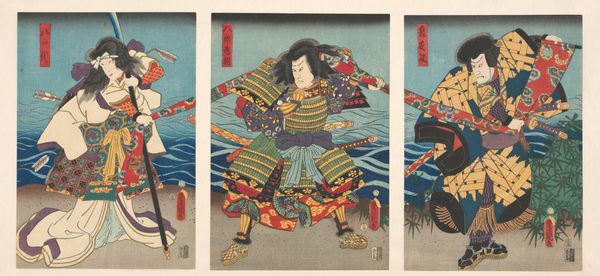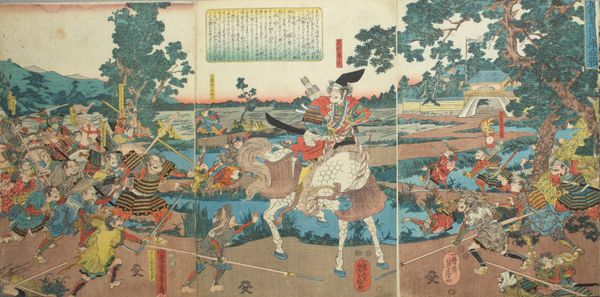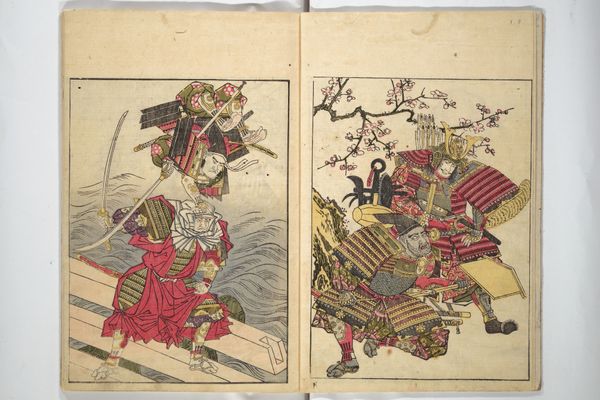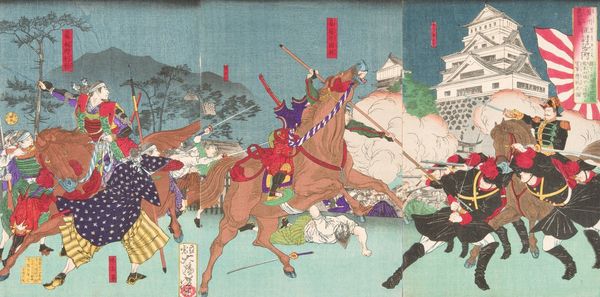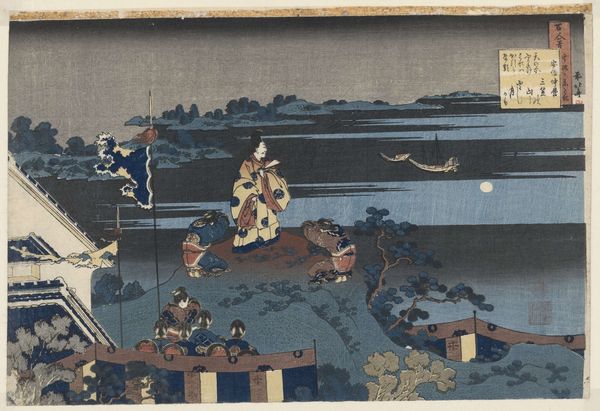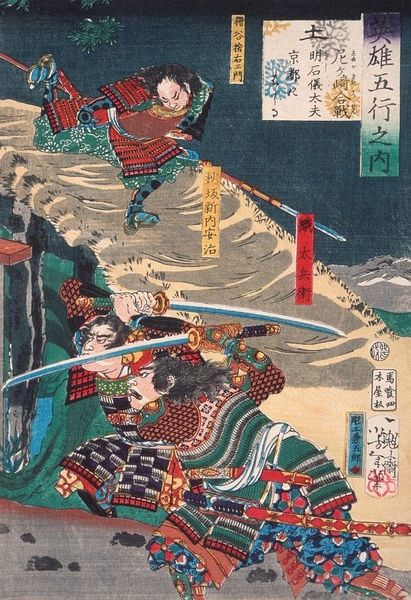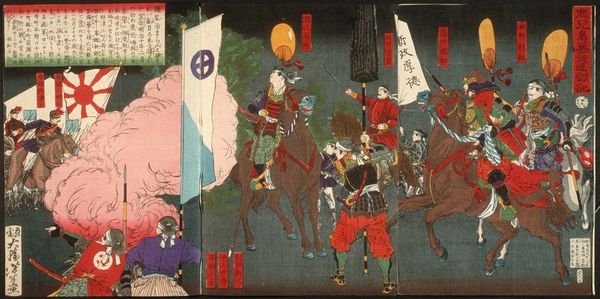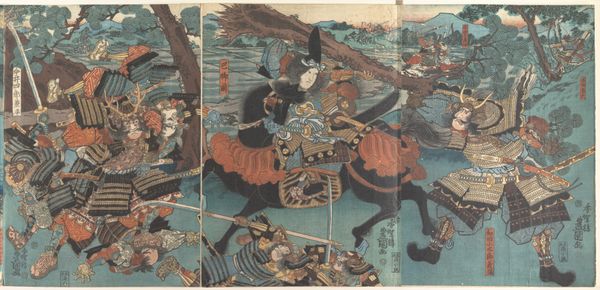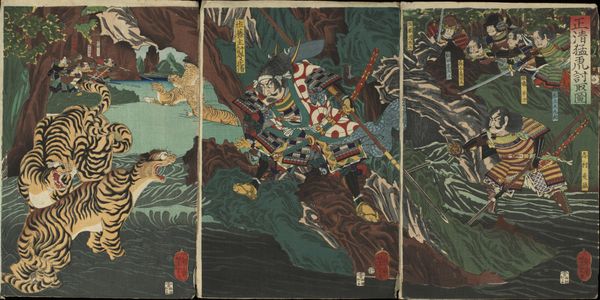
Plum Blossoms in the Forrest of Ikuta, from the series Bravery-Beauty of the four seasons (Buyū setsugekka no uchi-Ikuta no mori, Ebira no ume) 1867
0:00
0:00
print, woodblock-print
#
action-painting
#
portrait
#
narrative-art
# print
#
asian-art
#
landscape
#
ukiyo-e
#
figuration
#
woodblock-print
#
horse
#
japanese
Dimensions: Overall (a): 14 3/4 x 10 in. (37.5 x 25.4 cm) Overall (b): 14 9/16 x 10 in. (37 x 25.4 cm) Overall (c): 14 9/16 x 10 in. (37 x 25.4 cm)
Copyright: Public Domain
Editor: Here we have Tsukioka Yoshitoshi's woodblock print from 1867, "Plum Blossoms in the Forest of Ikuta." The three panels depict what looks like a fierce battle scene at night. The detail is incredible, and it feels so dynamic! What catches your eye about this piece? Curator: My focus goes immediately to the materials and production process of this Ukiyo-e print. Consider the woodblocks themselves, the labor involved in carving those intricate designs for each color layer. Then, the paper – likely a specific type of handmade Japanese paper carefully chosen for its ability to absorb the ink. The dark background would require careful attention during printing, an even distribution to keep it from getting blotchy. Doesn't this elevate it beyond a mere image? Editor: Absolutely! Thinking about the hands that meticulously carved each block adds another layer to its story. So, beyond the technical skill, how does the historical context play into its meaning? Curator: Given the period, this print likely comments on shifting social structures. Late Edo period, we’re seeing increasing merchant power. The samurai depicted, their gear and actions - all items of great value requiring both specific materials and access to expertise to produce - perhaps Yoshitoshi uses them to challenge old social hierarchies by highlighting both the artifice of status and power of consumption.. Does thinking about the historical materials influence your read on the narrative? Editor: That's a really interesting perspective. I was initially caught up in the action of the scene, but understanding the social commentary through the lens of production gives it so much more depth. Curator: Exactly. The ‘action’ wouldn't exist as we understand it without skilled craftsmanship and access to these commodities. How does recognizing labor reshape your understanding of “Bravery-Beauty” referenced in the series title? Editor: It suggests that bravery and beauty are, in a way, products of material and social conditions rather than inherent qualities. That’s fascinating! Thank you. Curator: Indeed, examining the materials reveals hidden dimensions. I've enjoyed rethinking it too.
Comments
No comments
Be the first to comment and join the conversation on the ultimate creative platform.
